German arms feeding the Yemen conflict
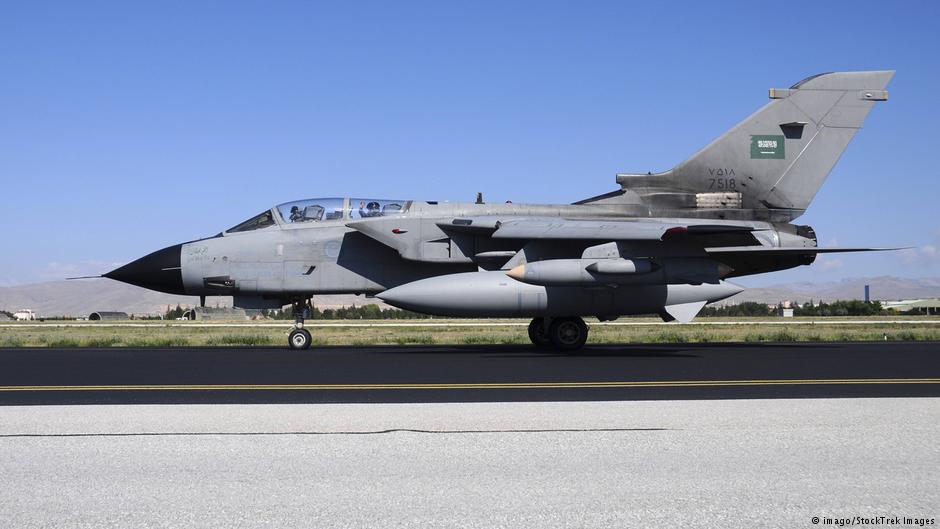
The "world of war", as one observer put it, was on display in Abu Dhabi this February. At IDEX 2019, the Middle East's biggest defence fair, more than 1,200 companies showed off their latest state-of-the-art defence technology. Many of the stands were manned by representatives of German arms manufacturers.
This year the host, the United Arab Emirates, awarded military procurement contracts worth more than $5 billion (€4.4 billion) to national and international companies, including American and European arms manufacturers.
The Emirates have long been one of Germany's top clients when it comes to arms and defence technology. But since 2015, its military has been one of the major parties at war in one of the world's most deadly conflicts: the war in Yemen. The UN has termed it the worst humanitarian conflict of our times; millions have been pushed to the brink of starvation and thousands killed.
Government 'not aware' of German arms in Yemen
Until now, the German government has repeatedly denied having any knowledge of German weapons and technology employed in Yemen by Saudi Arabia and the Emirates.
Only recently, at this year's Munich Security Conference, German Economy Minister Peter Altmaier repeated that he was not aware of arms exported from Germany in the conflict. "I have not had any news about it so far,” he said.
But the Deutsche Welle, together with German public broadcaster Bayerischer Rundfunk, Stern magazine, the Dutch investigative bureau Lighthouse Reports and the investigative network Bellingcat, trawled open source footage drawn from Twitter, YouTube and Google Earth, as well as news reports and agency photos.
The result: conclusive proof of German-made arms and technology in Yemen – in the air, at sea and on land, despite German arms guidelines that expressly forbid exports to countries involved in armed conflicts, unless they are acting in self-defence.

In one news report the team viewed, a convoy of pickup trucks trundles along a tarmac road. In the distance, a rugged mountain range looms on the horizon. As they drive past the camera, the soldiers in the back wave and one man holds a flag aloft, while several others flash a victory sign.
They are Sudanese mercenaries, recently disembarked close to the Yemeni port of Aden, heading north to join the fray on the side of the Emiratis in late 2015 – a claim that is corroborated by other international news reports from around the same time.
The ground war
One bulky vehicle stands out among the convoy of pickups: It is an American-built Oshkosh, an armoured all-terrain vehicle mounted with a conspicuous weapons station: the Fewas, built by Dynamit Nobel Defence, a company based in the western German municipality of Burbach. The Fewas, according to the firm's website, allows for the "convenience” of automatic target tracking, meaning that once the operator sets a target, the weapons station automatically pursues it.
In 2009, the German government approved the export of Dynamit Nobel weapons stations and spare parts worth €81 million to the UAE.
Trawl footage and photos of Emirati forces operating in southern Yemen and the Oshkosh is a common sight, many of them equipped with Fewas weapons stations. DW and its research partners compared satellite images with video footage and news reports. The team was able to identify the exact location of several Oshkoshs carrying Fewas stations.
The most recent example was a video uploaded by the news channel Arab 24 in late 2018, which the team located as having been shot in Al Khawkhah on the Yemeni coast. The team also came across howitzers with German-made chassis and motors firing at Houthi territory from across the Saudi border.
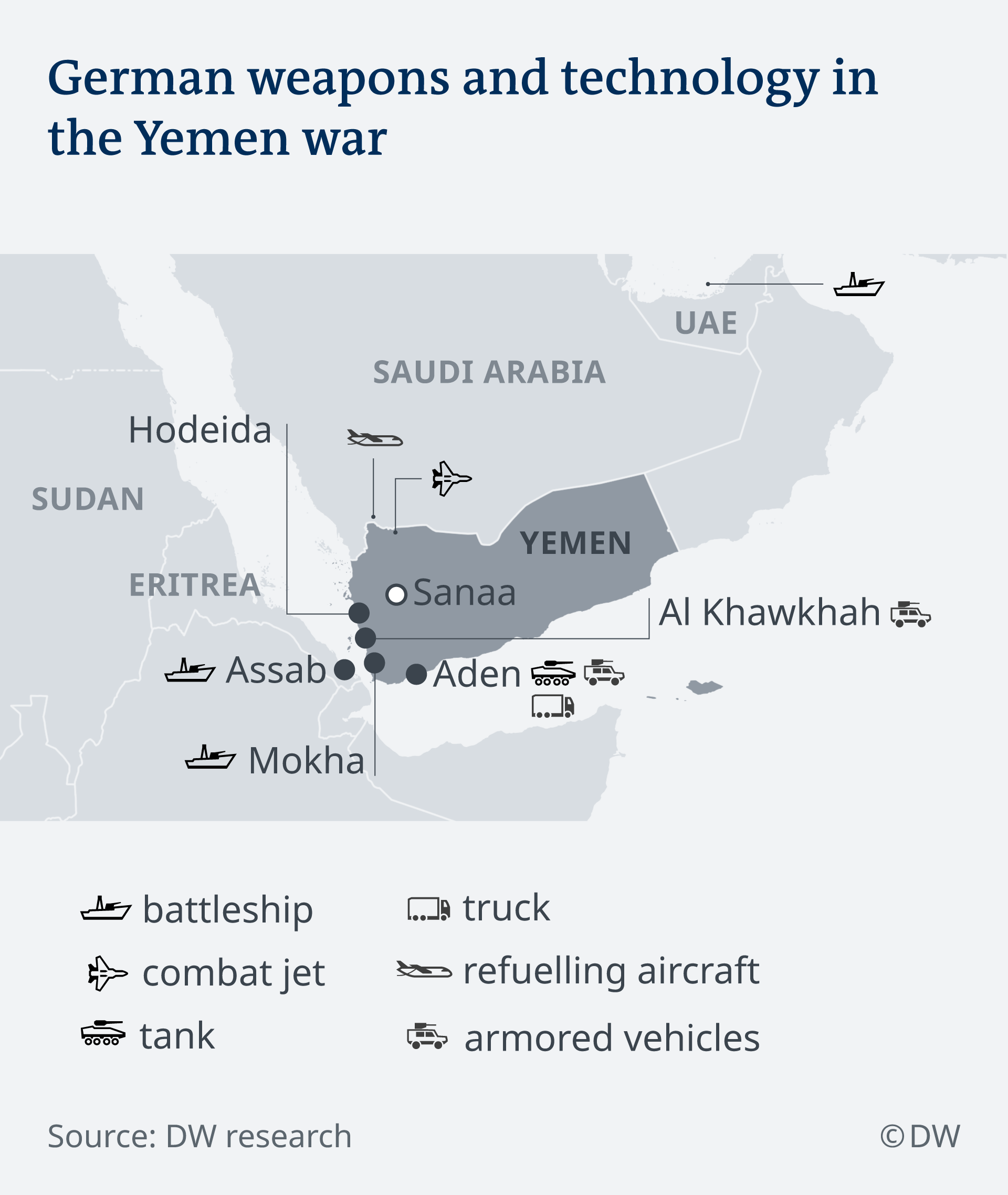
Continued export despite tough guidelines
Germany prides itself as having one of the most restrictive arms export controls. Buyers have to sign an end-user agreement in which they pledge not to sell the weapons or pass them on to any other group or country.
On top of that, the governing coalition under Chancellor Angela Merkel signed a coalition agreement in early 2018 that explicitly forbids the approval of weapons exports to any country "directly" involved in the war in Yemen.
Nevertheless, exports to both Saudi Arabia and the Emirates continued to be approved. In the first nine months of 2018, the Bundessicherheitsrat – the security council consisting of the chancellor and her chief ministers, who meet in secret to approve weapons sales – signed off on exports worth roughly €416 million to Saudi Arabia.
From October to December 2018, Germany also approved exports worth more than €40 million to the Emirates.
Exemptions for 'strategic partners'?
So why has the German government apparently ignored its own guidelines, even as thousands of civilians have been killed in Yemen?
Saudi Arabia and the UAE are both considered strategic partners. "The United Arab Emirates play an important role in the Arabian Peninsula in the international community's efforts to restore stability" in the region, the German Foreign Office told DW and its partners.
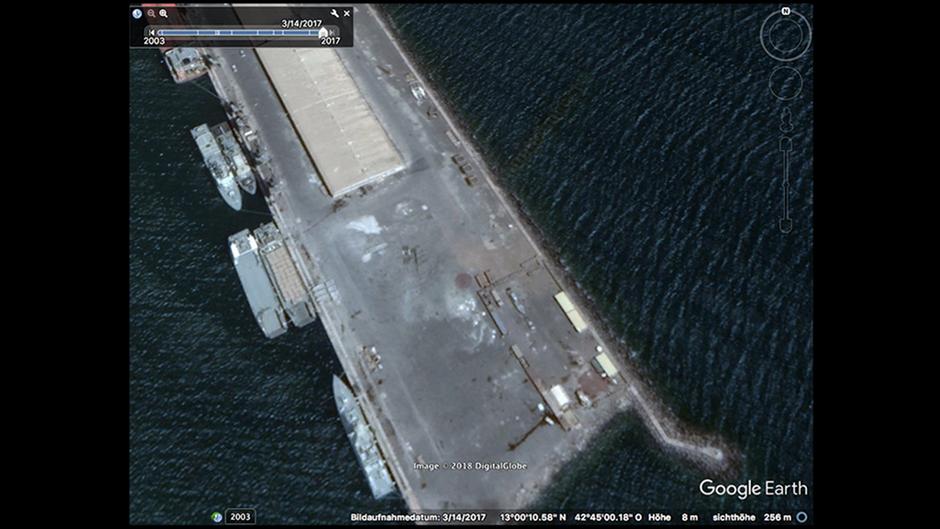
This explains why it took the public outcry surrounding the murder of prominent Saudi journalist Jamal Khashoggi in the Saudi consulate in Istanbul for the German government to temporarily halt all military exports to Riyadh, despite Saudi Arabia's involvement in the Yemen conflict.
The war has pitted the Houthis, who are believed to be supported by Iran, against a Saudi-led coalition backing the former Yemeni government, currently in exile in Riyadh.
While many of the media reports have focussed on Saudi Arabia, less attention has been given to the Emirates, who are leading the ground offensive and are also involved in the naval war.
Among their arsenal, German-made technology and weapons are a common sight: DW and its partners were also able to identify several large military trucks in the convoy that included the Fewas weapons stations, but also in other locations in Yemen. They are MAN trucks, most likely built and exported to the Emirates by RMMV, a joint venture of German defence giant Rheinmetall and truck manufacturer MAN.
In the footage that the team viewed, MAN trucks were spotted in Yemen carrying the French-made battle tank Leclerc, which is equipped with a German-made motor. The team also identified the Leclerc tank wrapped in an extra layer of armour, most likely "Composite Lightweight Adaptable Reactive Armour" or Clara for short, a type of reactive armour that protects against explosives, also designed by Dynamit Nobel Defence.
By March 2017, the war in Yemen had been dragging on for two years. Yet the German government approved the export of "reactive armour" worth roughly €126 million to the UAE.
At that point, it is hard to imagine the chancellery and top political aides being unaware that the Emiratis were using Leclerc tanks for their ongoing ground offensive, which relies on a myriad of brutal local militias and mercenaries.
Torture by UAE forces?
Amnesty International has documented numerous human rights abuses committed by the UAE and their allied forces. According to a 2018 report, scores of men have been spirited away and detained in secret prisons in southern Yemen. Many have been tortured; some are feared to have died in custody.
DW spoke to one man who said he was detained in Aden in 2016 for refusing to assassinate a local political figure. While DW is unable to independently verify his account, the details are consistent with the testimony of other victims. The man was held in various locations, he said, all run by Emiratis: "The one who tortures is an Emirati. The one who interrogates is an Emirati. The jailor is an Emirati." He told DW he was kept for one year and eight months and "exposed to the cruellest types of torture, such as electric shocks and hanging for hours." But that is only one of the many tragedies that make up the conflict in Yemen.
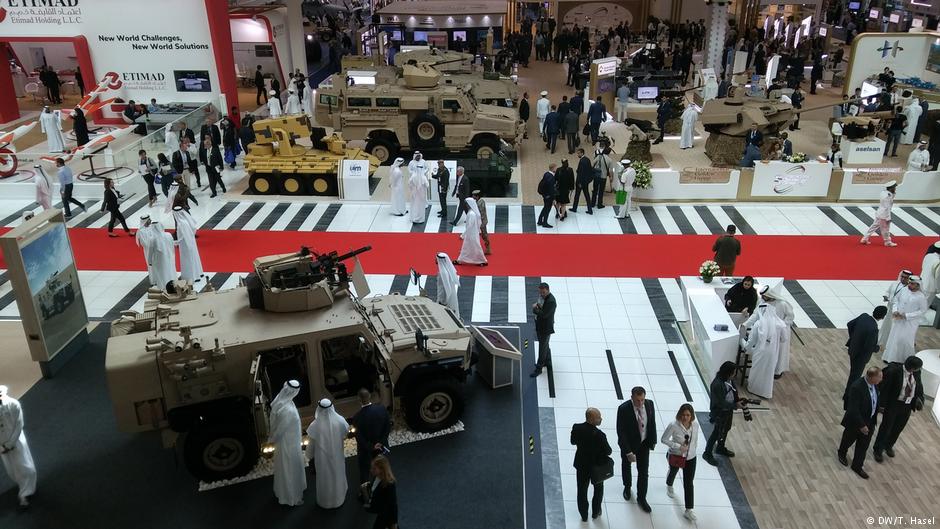
It is civilians who bear the brunt of the war, which has dragged on for almost four years: According to the Armed Conflict Location & Event Data Project (ACLED), a database that tracks armed conflicts, more than 60,000 people have been killed. Atrocities, possibly even war crimes, are being committed on both sides.
By supplying arms to the coalition partners, Western governments including Germany's "are directly complicit in the war crimes being committed by the Saudi-led coalition," Kenneth Roth, the executive director of Human Rights Watch (HRW), told the research team.
International human rights organisations agree: the Saudi-led coalition has conducted scores of airstrikes that have indiscriminately and disproportionately targeted civilians and civilian targets, including schools, mosques and hospitals.
Assab: Operational base for Yemen war
The coalition blockade of the port city of Hodeidah, the country's main entry point for food and medicines, has led to mass starvation and hunger, while pushing up the price of everyday goods. Footage of emaciated and starving children has become the go-to stock imagery used in news reports on the war in Yemen.
Only 60 kilometres separate the Yemeni coast from the Eritrean port of Assab located across the strait of Bab al Mandab. According to the UN, the Arab coalition is using "Eritrean land, airspace and territorial waters in its anti-Houthi military campaign."
From Assab, Emirati warships can quickly set across the strait to the Yemeni port cities of Hodeidah or Mokha, rather than having to undertake the long journey from their home ports via the Gulf of Aden. In 2015, according to UN experts, the Emiratis and Eritrea signed a 30-year lease, which allows for the UAE to use the port of Assab. In a war that has relied on a naval blockade, this is a major strategic advantage.
The port is also used to shuttle soldiers and military gear across the strait. In return, Eritrea is said to receive money and oil. But it's a deal that the United Nations has criticised as violating the weapons embargo that they imposed in 2009 against the totalitarian state.
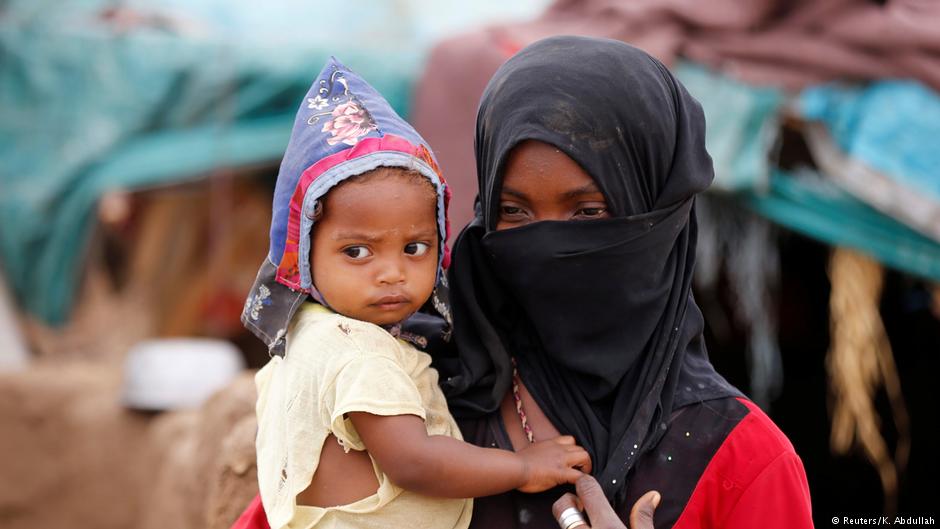
Until it was lifted last November, it forbade all UN members to bring soldiers or military equipment to Eritrea. The Emirates, though, didn't seem to be overly bothered: It stationed part of its navy in the port of Assab, including several German-built warships.
Several satellite images show a long, grey ship towed to a dock in Assab with a conspicuous helipad, most recently in late 2018 and early 2019: it is a Muray Jib corvette, a 65-metre-long combat vessel, built by the German shipbuilder Lurssen.
On its website, the company advertises the Muray Jib as suitable for operations "in confined and shallow water”, which would make it well-equipped for coastal waters.
From March 2017, satellite pictures also show a Frankenthal vessel in the harbor of Assab. Two of these German-built minesweepers were first used by the German navy and, in 2006, sold on to the Emirates. Moreover, a video published by Al Jazeera in October 2017 shows a few seconds of grainy footage of a wrecked boat. In the background, a grey vessel is creeping along the horizon.
The investigation team identified it as a Frankenthal vessel and managed to map its exact co-ordinates in the Yemeni harbour of Mokha. The port faces Assab across the strait of Bab Al Mandab. Shortly before the video was shot, coalition forces had taken control of Mokha.
In September 2018, the German government approved the export of warheads for military vessels to the Emirates that may well end up in the Yemen war, too.
German components in the air
In the air war, too, German technology is playing an important, possibly even decisive role: The Saudi Air Force is comprised of fighter jets it acquired from the U.S. and Europe, including the Panavia Tornado, built by a German, British and Italian consortium.
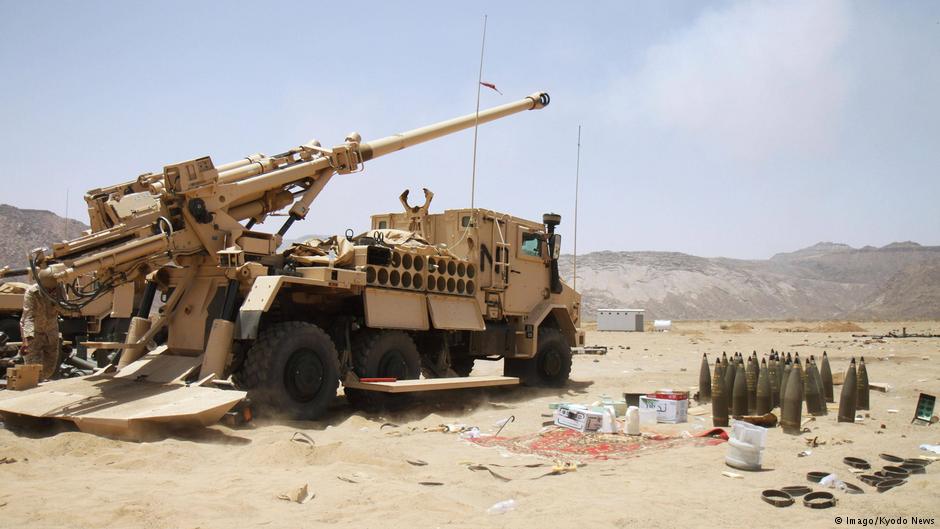
Many of the Tornado's components, including the center fuselage, fuel system and the engine, are German-made. While its production was phased out in 2007, Tornados and its successor model, the Eurofighter Typhoon, make up a large part of Saudi Arabia's combat jets.
The German export guidelines are clear that the government should object if components for arms are clearly destined for countries involved in active warfare. Despite the British government admitting in late December 2016 that the Saudi air force was operating UK-supplied Typhoons and Tornados in Yemen, Germany has continued to supply Riyadh with components via the UK. "Germany may not sell fully-fledged fighter bombers. But by selling parts that are essential to the operation of these weapons, Germany has a responsibility to make sure that these weapons are not misused," HRW's Roth maintains. "It can't just ignore its responsibilities."
Until now, there has been no verified evidence of Saudi Tornados flying over Yemen. But DW and its partners found a video published in January 2018 in which two men with turbans and rifles on their shoulders dance around the wreckage of what appears to be a downed aircraft. The video was produced by "Yemen Wrath", a self-declared, pro-Houthi social media site. Later, the footage zooms in on what the team has identified as a wing of a Panavia Tornado.
Assuming that the video was shot at the actual site, the team was able to locate the exact location of the crash in Al Souh Valley in an area called Ketaf in Yemen. The research is corroborated by media reports from the same time, which refer to Houthi fighters claiming to have shot down a Tornado. The same reports go on to quote the Saudi-led coalition as referring to a combat jet crashing following "technical failure".
This was followed by an "exclusive" feature story by Saudi-based Arab News detailing the rescue mission mounted to extract the pilot, which, the reporter gushes, "tested the bravery and professionalism of the RSAF personnel to the limits." He goes on to write about how the "crewmen were flying their Tornado jet on a combat mission as part of the Arab coalition fighting Houthi rebels."
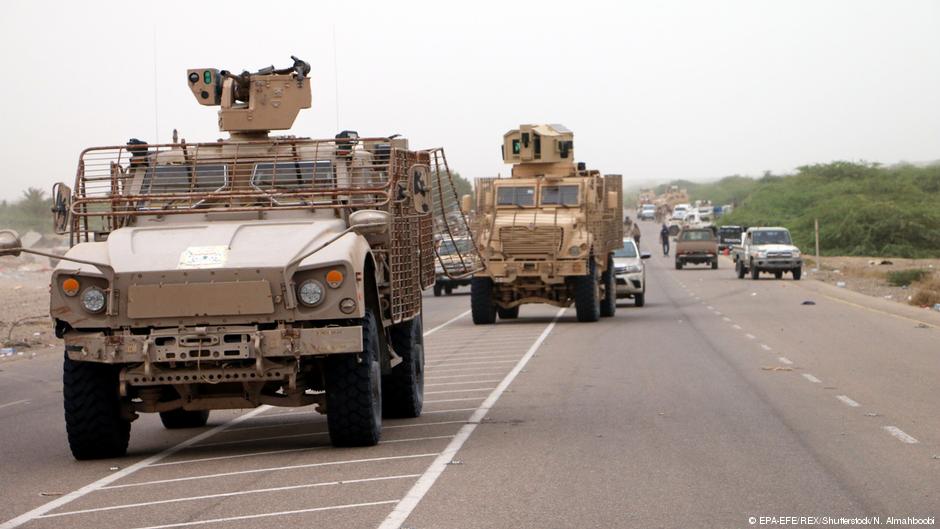
And, what is more, the Saudi Air Force uses a refuelling jet, a huge, grey plane that can refuel other aircraft mid-air, thereby allowing for longer combat and bombing missions: the Airbus A330 MRTT, a military spin-off of the civilian A330 airliner built by Airbus, a multinational European consortium. The aircraft contains several important German-made components. In the past, Saudi Arabia ordered six of them; the UAE three.
The research team was able to verify a video posted by the Twitter account @MbKS15, an account that appears to be linked to the Saudi air force: the short, shaky clip, seemingly taken from within the MRTT, claims to show the refuelling of a Saudi typhoon jet from the 10th Squadron. An analysis of the footage found that it was indeed most likely shot close to the border with Yemen.
Government: 'No information' about an end-use violation
When confronted with the team's findings, the German government declined to comment on specific questions concerning the use of individual weapons systems in Yemen. The foreign ministry claimed to "have no information about a violation of the end-user agreement" of arms exported to Saudi Arabia and the UAE. The weapons manufacturers contacted by the research team claimed to be following German rules and regulations. Neither the Saudi nor Emirati embassy in Berlin responded to written questions.
As the war continues from the air, land and sea, human rights activists are pleading with Western governments.
"I am calling on all Western countries to stop selling weapons to Saudi and the Emirates," Tawakkol Karman, the Yemeni Nobel Peace laureate, told DW and its research partners. She said the war will not stop "if Germany or any other country continues selling weapons to Saudi (Arabia) and the UAE."
But that, it seems, is not what the German government is planning to do. Rather, by all accounts, Germany is working to loosen its arms export control rules to make it easier to continue with joint weapons projects with France, according to a leaked internal strategy paper.
Nina Werkhauser & Naomi Conrad
© Deutsche Welle 2019
